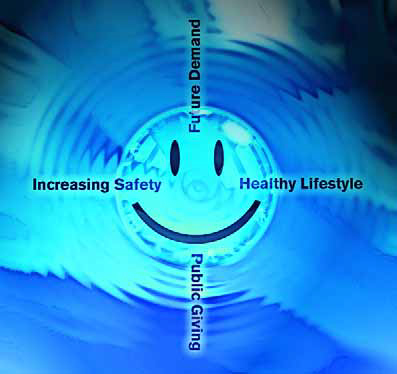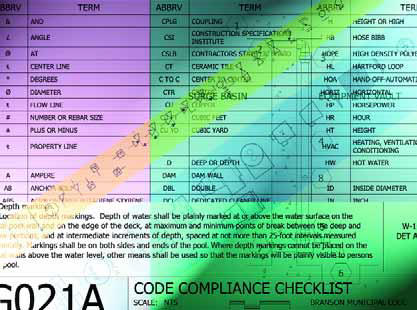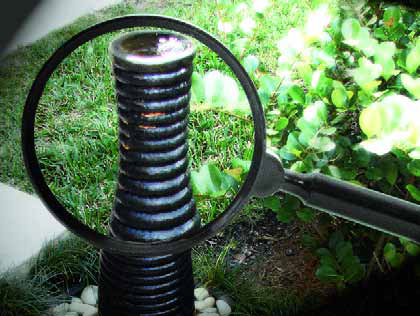column
In just about every profession, it seems that there’s one thing or another that goes unnoticed and underappreciated because it is overshadowed by more visible or sensational elements. In the watershaping and landshape trades, for example, I see foundations as being among these unsung details despite their obvious significance. They’re so important that I always talk with my clients about them and the role proper preparation plays in the success of everything atop them. After all, I say, a home can have wonderful tile work in the kitchen, but it really won’t be worth much unless
As winter draws to a close here in the northeast, we begin preparing in earnest to deal with the inevitable springtime rush. There are contracts to sign, materials to order, plants to grow, schedules to set and hires (if any) to be made. And we do all of this knowing that, once the weather breaks, we want to burst out of the gate like an odds-on favorite at the Kentucky Derby. To make this happen, we need to be ready. Where I live and work, winters are usually long, so by spring our coffers are low, our staff is eager to get some exercise and our general desire to
One of the longest-standing knocks against the pool and spa industry is that too many designers and builders rely too heavily on convention and seem disinclined to pursue new paths and ideas no matter how compelling they might be. Of course there are exceptions, but there’s a lot of truth to that statement when it comes to the technology chosen, for example, to drive circulation systems and chemically treat or light the water: All too often, pool and spa professionals tend to keep on specifying and installing equipment they’ve used for years – even if it’s outmoded or is no longer the best available approach – because they feel comfortable with it and
Last month, I opened a two-part discussion on healing gardens, a trend in landscape design that’s become popular among managers at hospitals and other healthcare facilities who desire spaces where patients, visitors and staff can spend a bit of time in nature to heal, set aside stress and otherwise regenerate themselves. In the time since I first became involved with these spaces, I’ve also seen demand for these gardens – known in other contexts as “tranquility gardens” – grow among
One of the greatest epiphanies I’ve ever had as a watershaper came many years ago when I was asked to tell a group of businesspeople what I did for a living. I’d been invited to attend a meeting of the Miami Chamber of Commerce and, as a newcomer, was asked to say a few words about my company and my work. I was to go second: The first speaker was in the carpet-cleaning business and, as I recall vividly, described what he did in such a way that it would’ve been a great cure for insomnia. Standing up after his sleep-inducing performance, I was
As is true of many business sectors, the architecture, engineering and construction industry (commonly and conveniently abbreviated as A/E/C) has its own language – and the construction documents generated by those professionals (watershapers very definitely included) are the medium through which everyone communicates. The challenge for watershapers is that we’ve come to the table a bit later than
If you’ve ever spent time in the hospital, you’re probably like me in having done your best to forget the experience. Not only were you recovering from some sort of serious injury or illness (or visiting a loved one who was), but you also had to endure the process in an environment that wasn’t quite hospitable. Most likely the room you or your loved one occupied was filled by an adjustable bed surrounded by beeping instruments. The walls were putty-white and scuffed, a couple of cellblock-like doors led to the bathroom and hallway – and a worn-out television hung questionably above the bed, threatening to
One of the clearest trends I’ve seen in watershaping through the past few years involves the use of water in the front spaces of properties, usually along a driveway or close to the main entrance. It’s something I’ve noticed on both the residential and commercial sides of the business, and these projects really do seem to be gaining traction as more time passes. In some cases, they might be the only watershape you’ll find on site. In others, they introduce a presence of water to be echoed
In the landscape lighting business, we often hear complaints about glare and get lots of questions about how to bring it under control. In some cases, it’s a minor annoyance, but in others, some clients are so sensitive to the discomfort it can produce that it ruins entire lighting designs for them. So what exactly is “glare”? I define it as light transmitted directly from a source into an onlooker’s eyes (either directly or indirectly) in such a way that it’s a nuisance. Beyond the squinting





















Plain Silly